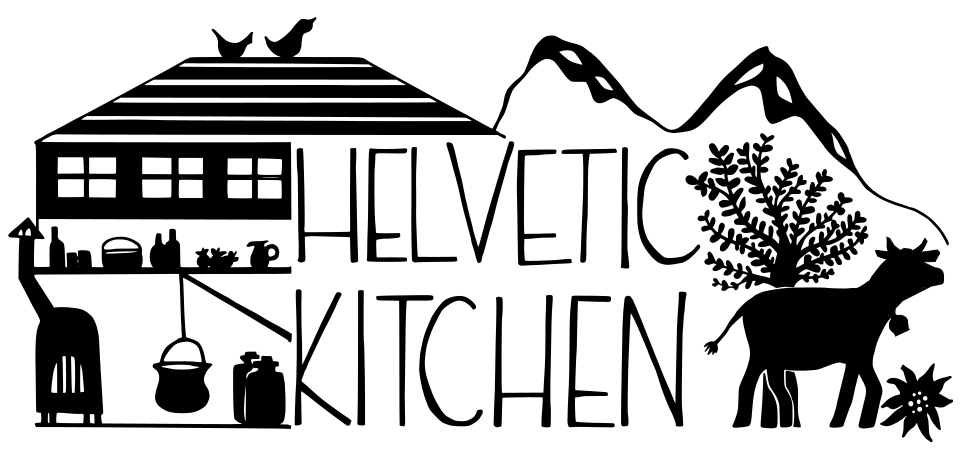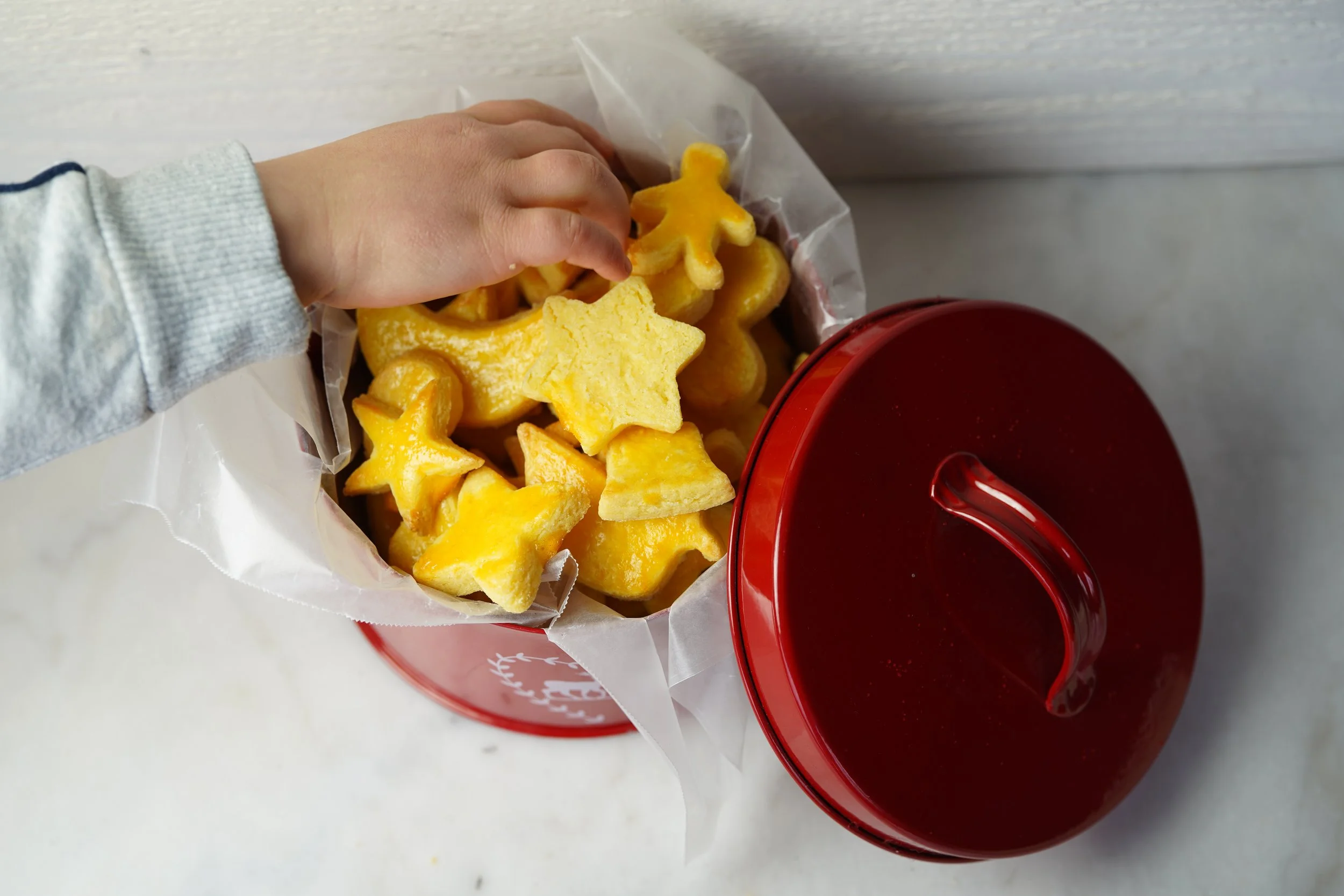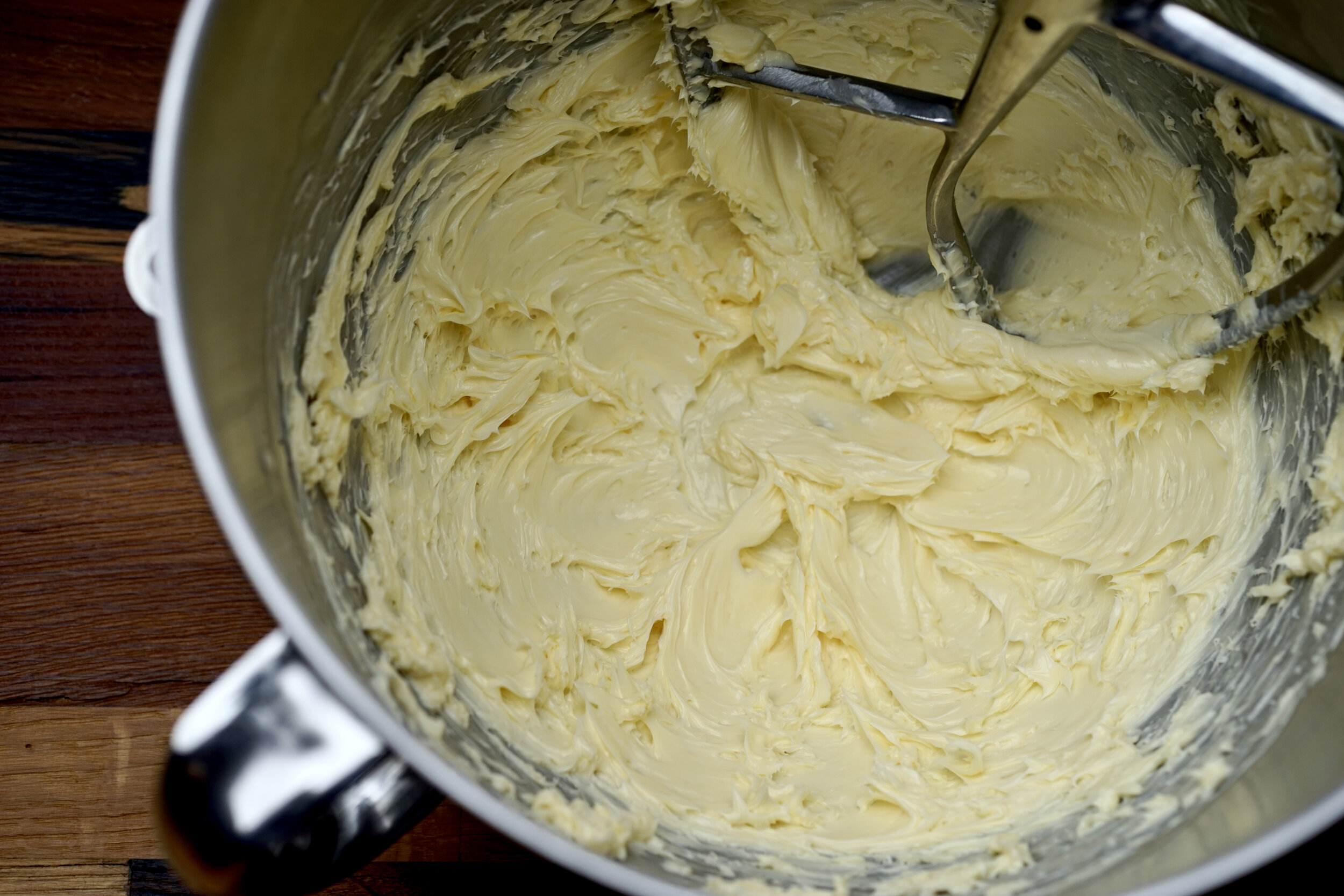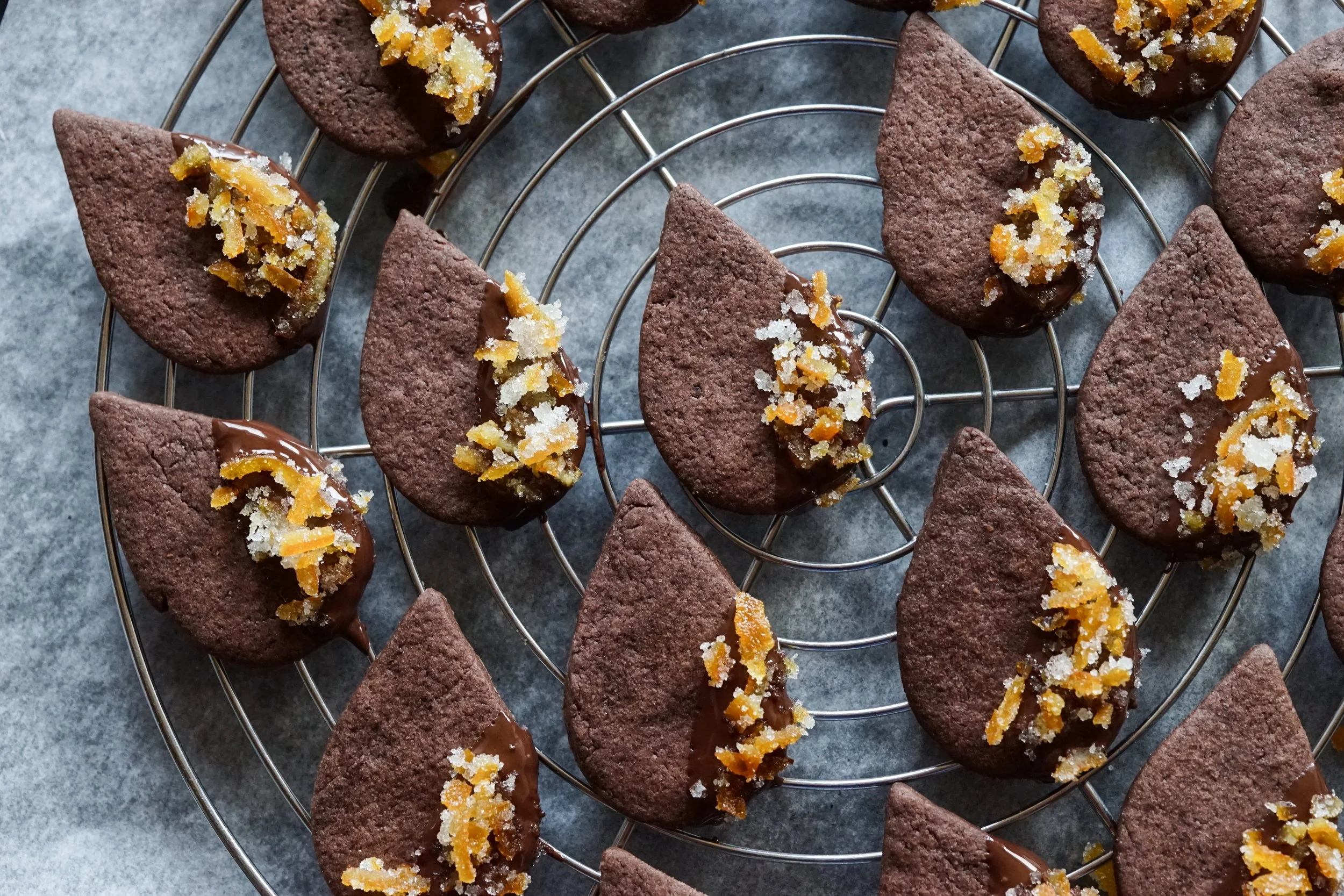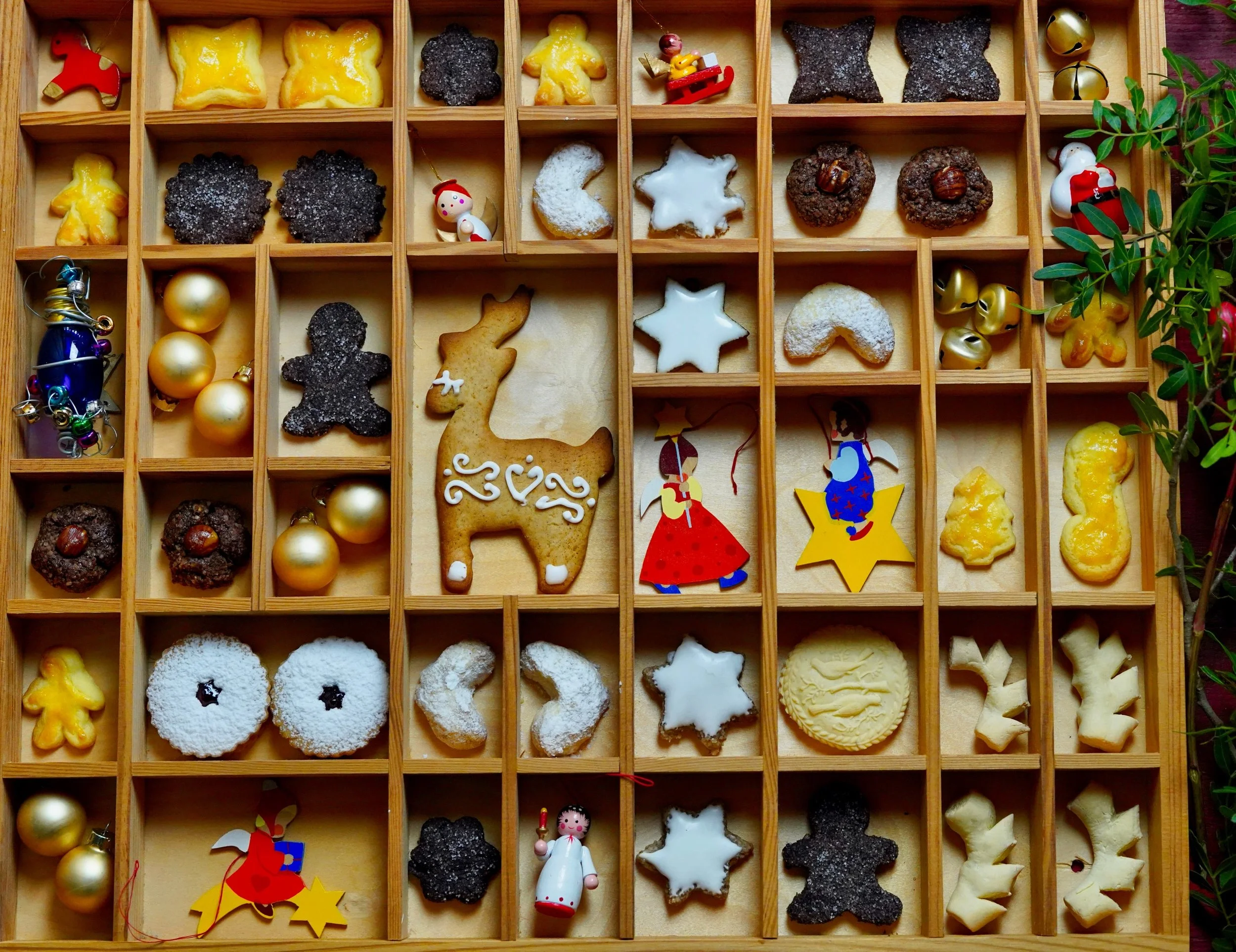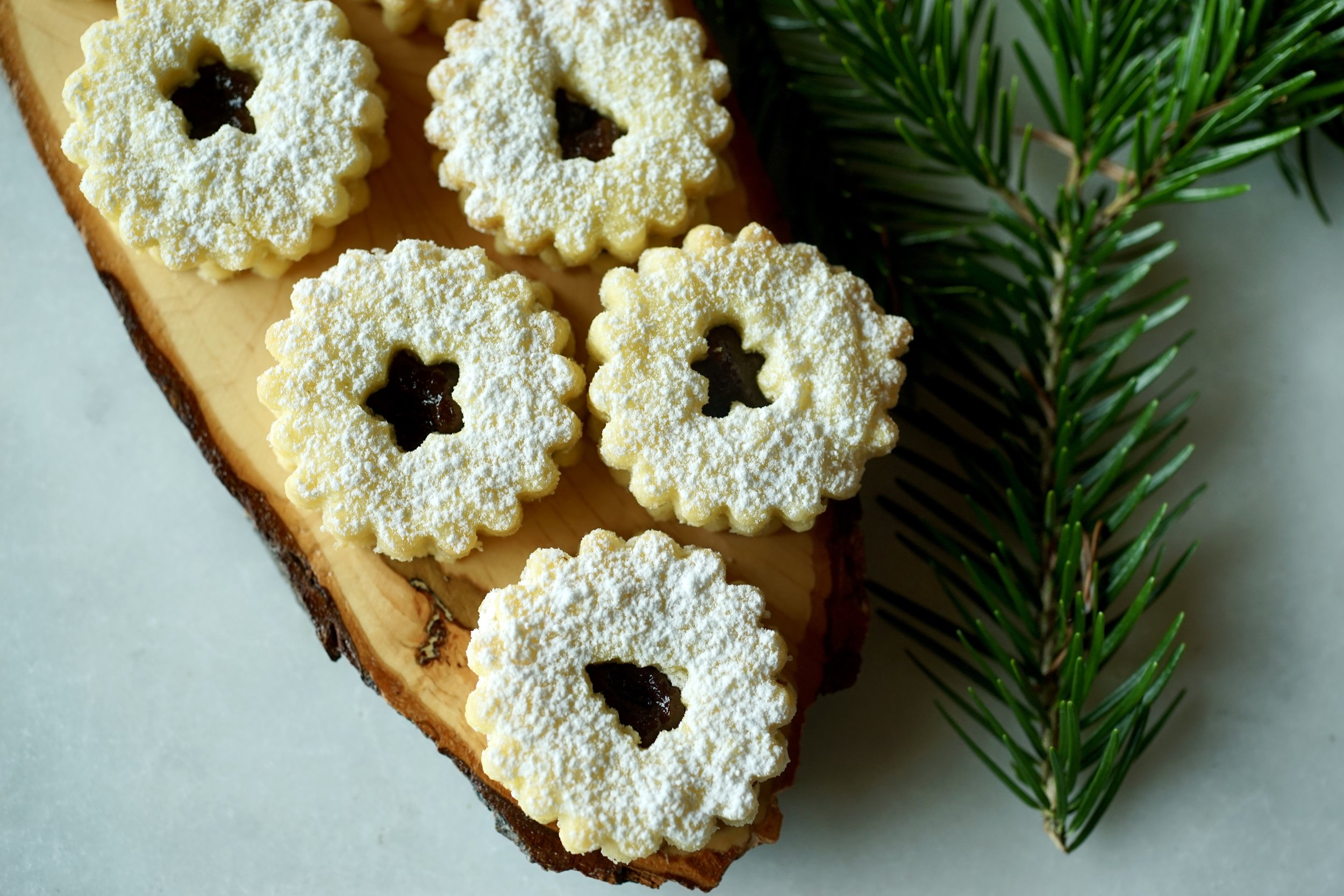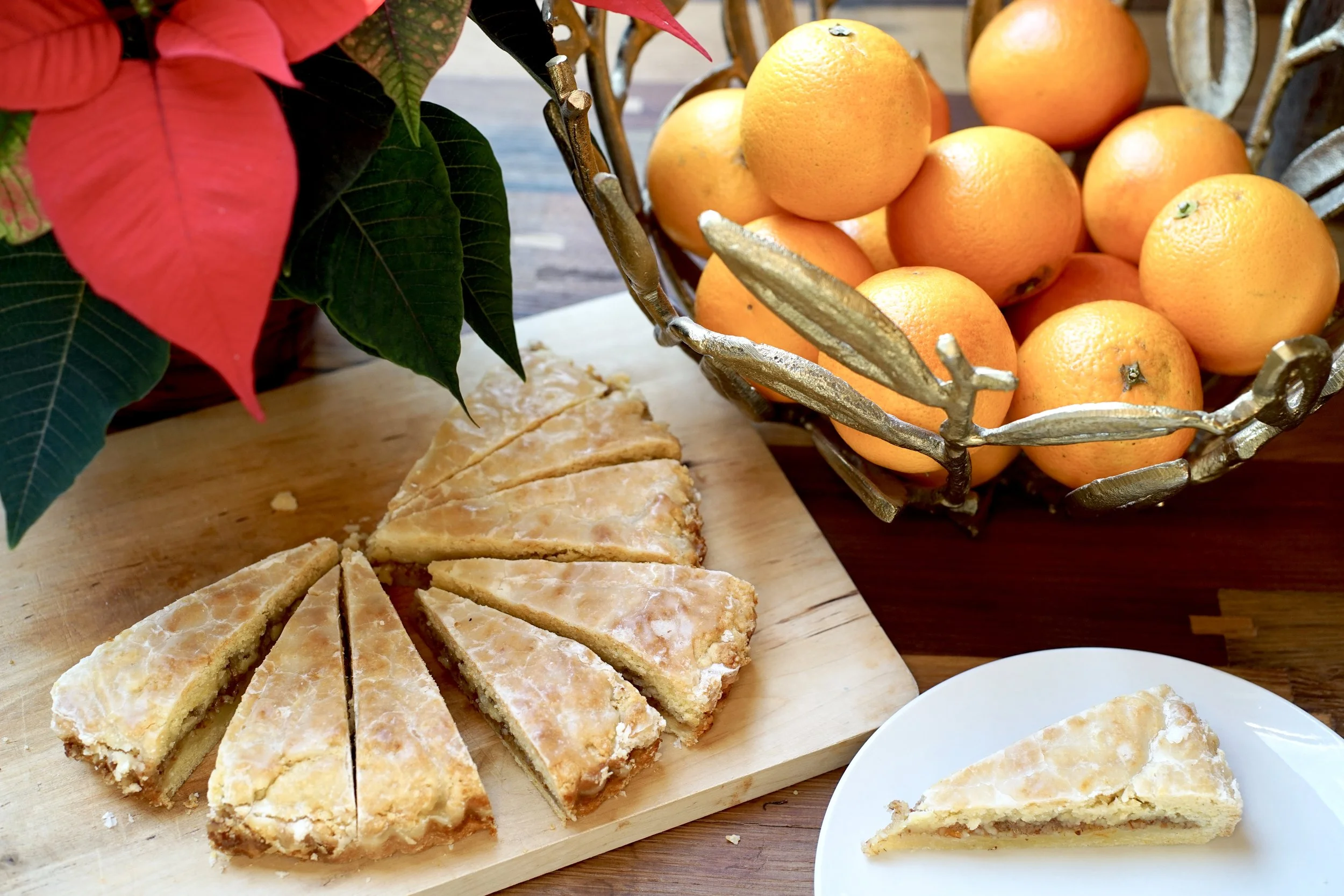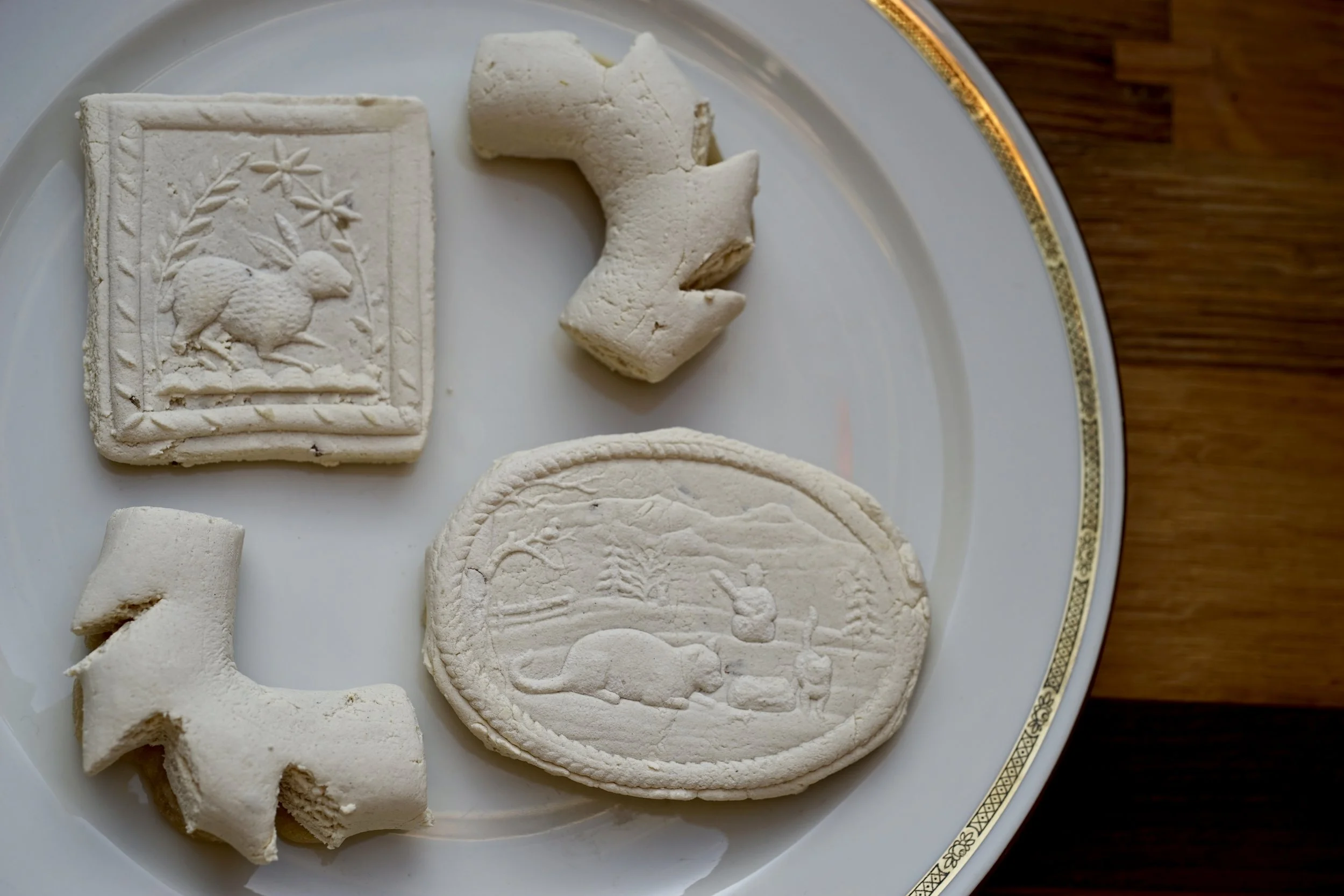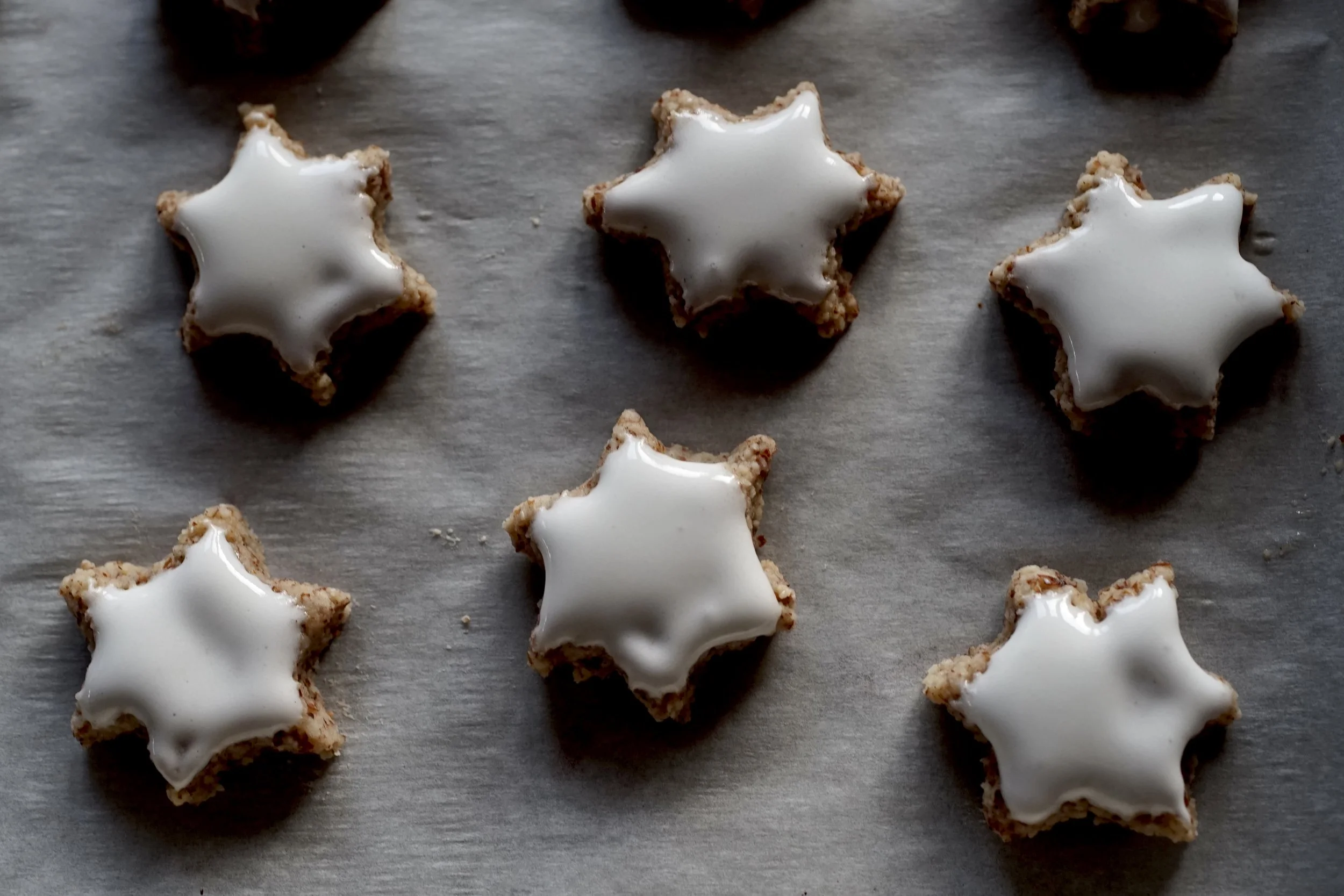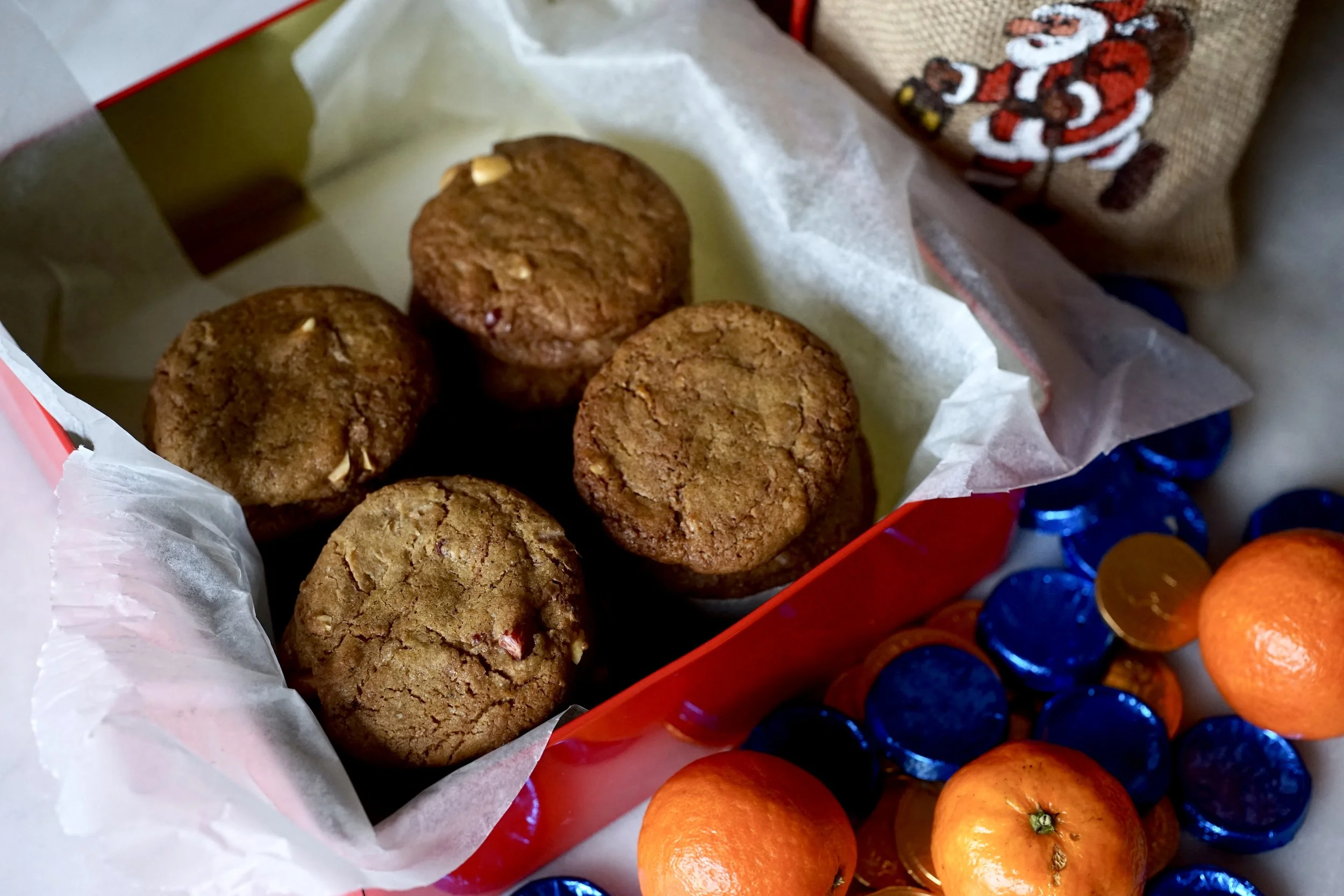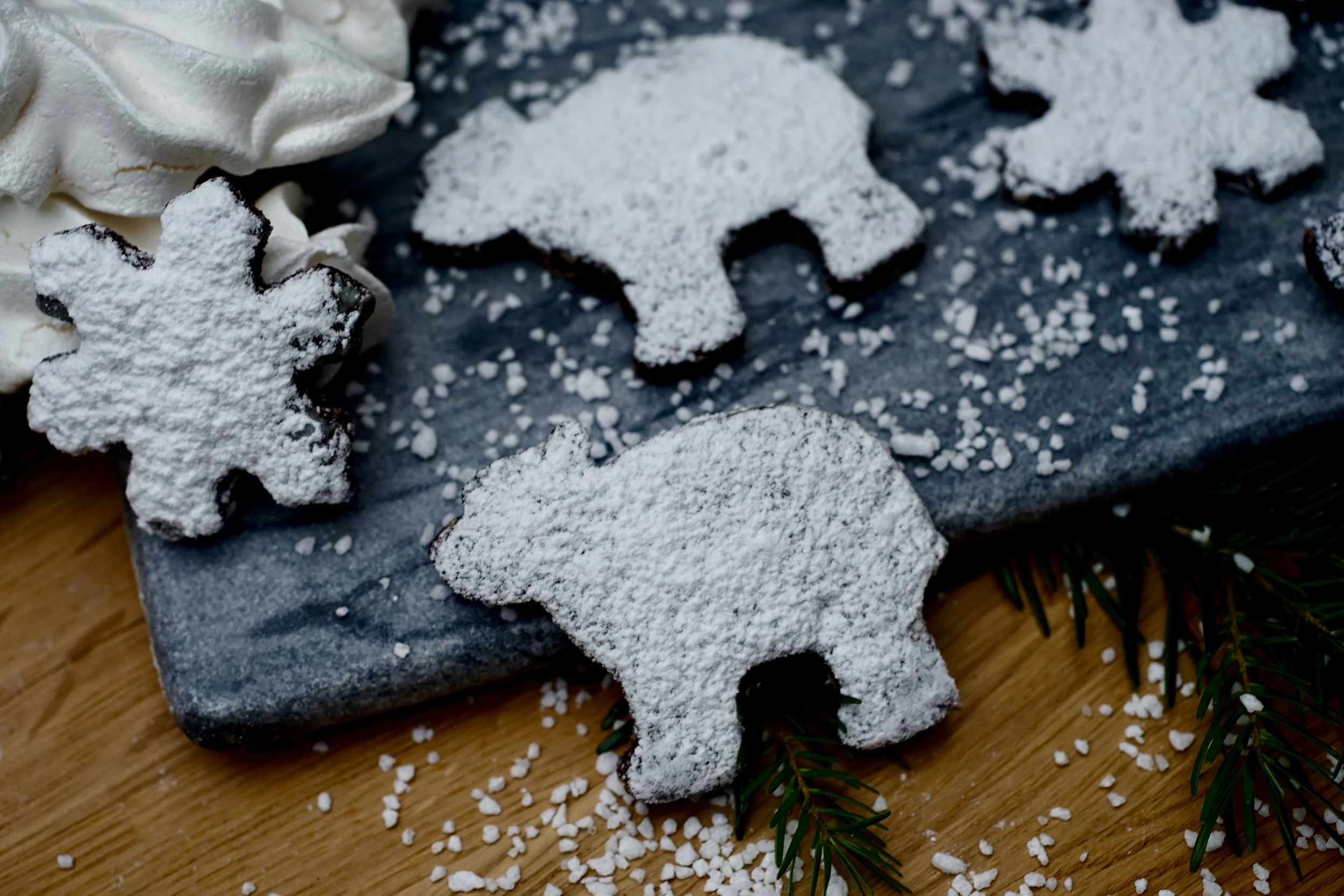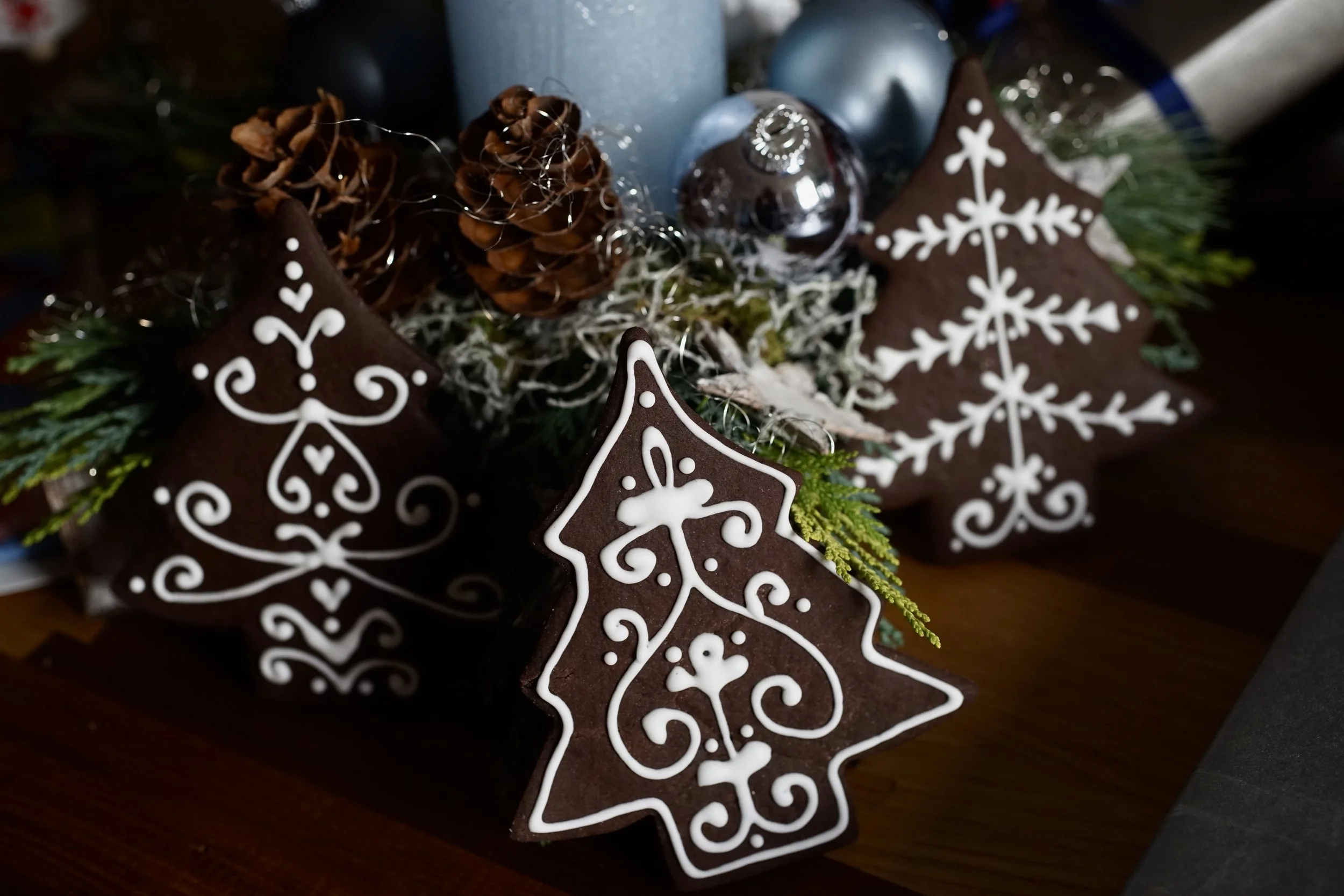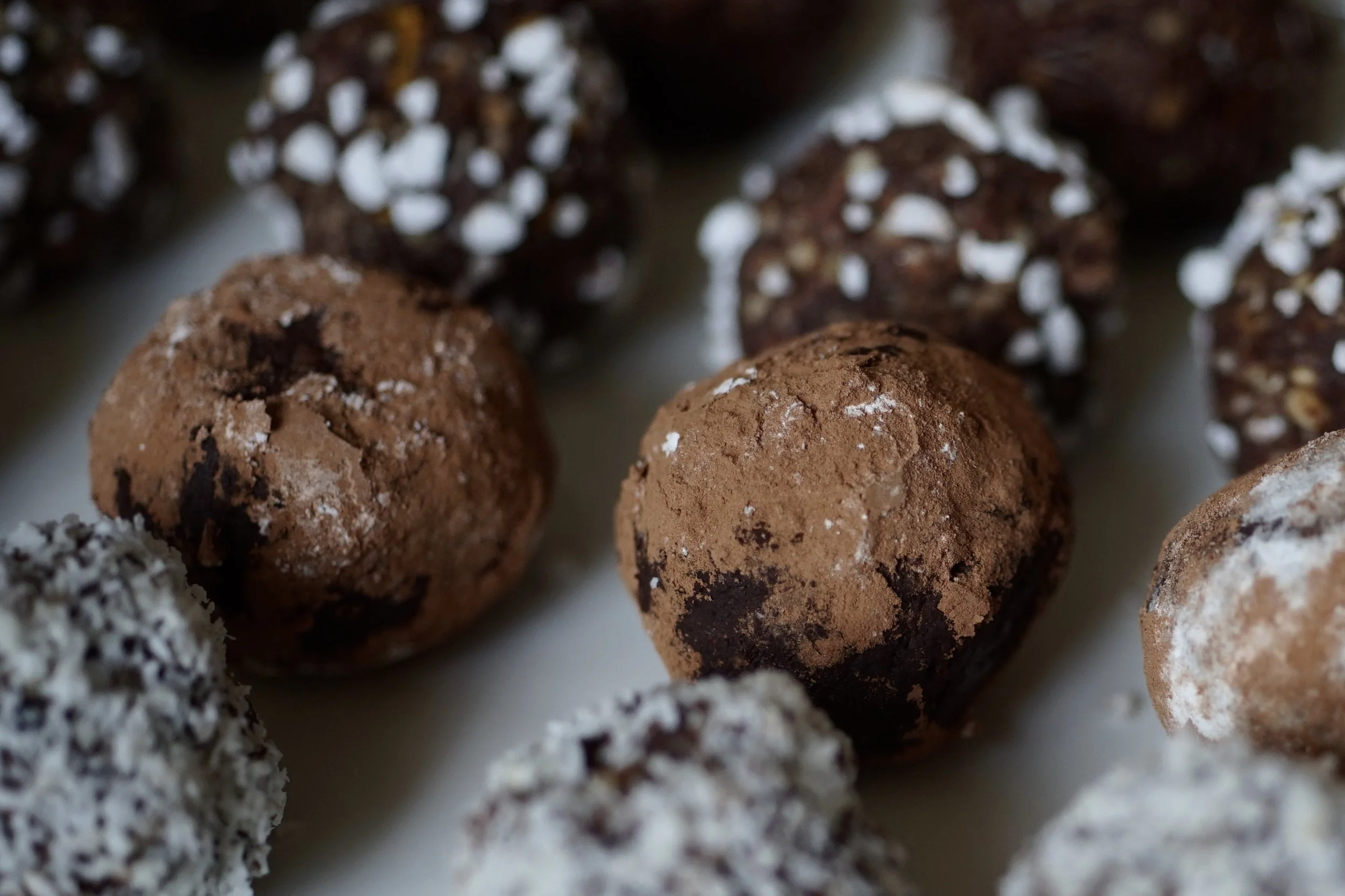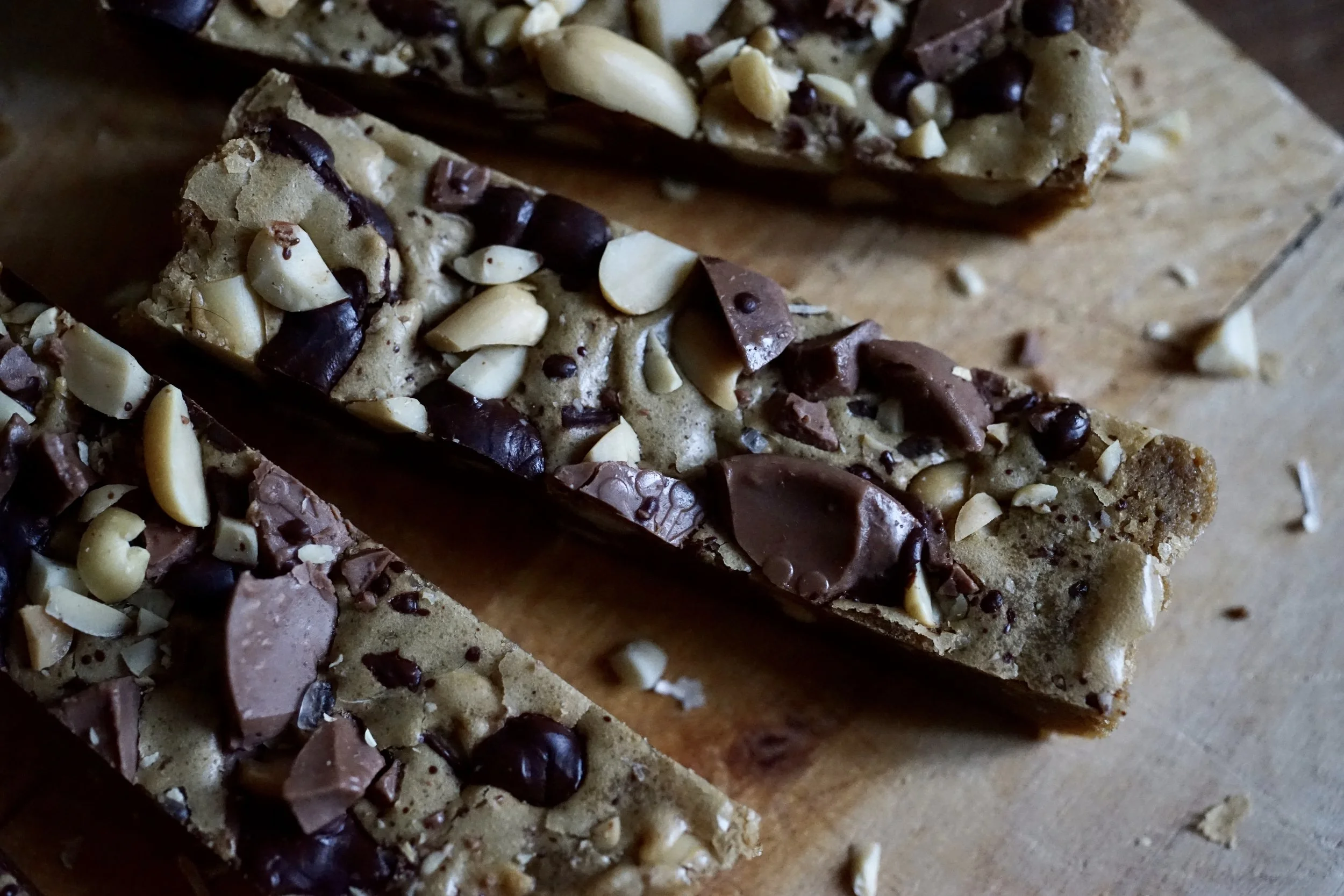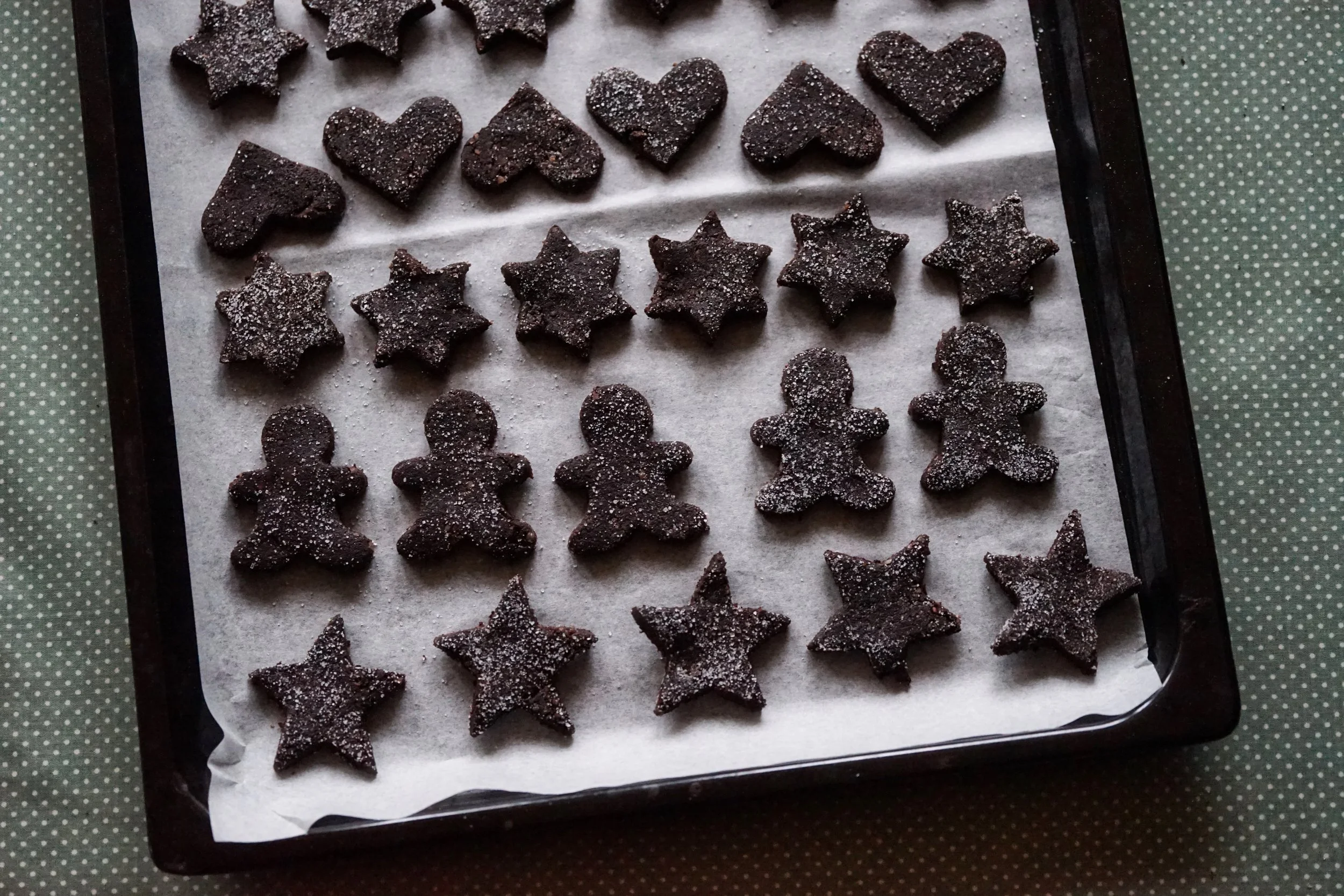Mailänderli
Today, the man in front of me at the checkout in the Coop had about seven packages of Mailänderli dough, the stuff you can roll out and bake.
The cashier smiled at him, "it's really the best Christmas cookie, gäu?"
I think most of German-speaking Switzerland would agree.
There is nothing that tastes more like Christmas to me than my mum's buttery, lemony Mailänderlis. She would carefully stack the little yellow Christmas trees, bells, hearts, and stars (the best because they were the biggest) between wax paper, in golden tins. Hers were always the best, that perfect mix of lemon and butter, and really crisp and golden. Perfect flat edges.
Try as I might, mine are never quite as perfect as hers.
According to the Kulinarische Erbe, the origin of the cookie is vague. The name suggests that they come from Milan (Mailand in German), but there is no direct evidence, only a slightly similar buttery Milanese cookie (though made with almonds and candied fruit). The first mention is a recipe in the late 1700s, and apparently it was customary to serve them with mulled wine at New Year's parties in Basel in the 19th century.
Today, they are absolutely the standard Swiss Christmas cookie made by every bakery and every family. The recipes are generally similar, equal parts butter and sugar and double the flour. (But none are as good as my mum's.)
Cookie
250 g butter, room temperature
250 g sugar
80 g egg yolks (4-5, depending on the size)
500 g flour
zest from one lemon
Glaze
2 egg yolks
2 tsp sugar
Beat the butter and sugar until the colour changes to a very pale yellow and it is light and fluffy.
Add the lemon zest.
Add the egg yolks one at a time, beating well.
Add the flour and mix until the dough comes together (it might be a bit crumbly).
Split the dough into 3 discs and wrap in plastic, or you can also already roll out the dough between two sheets of parchement—see the note on rolling, below.
Let cool in the fridge for about an hour.
When you are ready to cut and bake:
Preheat oven to 180 C / 350 F / gas mark 4
Roll out the dough to 1 cm (½ inch).
Cut out the cookies and place on parchment lined trays.
Whisk together the egg yolks and sugar. Brush an even layer on the cookies.
Bake for about 10 minutes, or until the glaze is set and the bottoms are golden.
Use very soft butter, and try to beat it until it is really light and fluffy.
When zesting the lemon, be sure to only get the yellow part, the white pith is very bitter.
If you aren't going to use the dough within a day, just pop it in the freezer and defrost overnight when you're ready to use it.
I like my Mailänderli to be a whole centimetre thick because that’s how my mum made them, but many families roll them slightly thinner—use your discretion.
Use up your extra egg whites with recipes for Basler Brunsli or Zimtsterne.
A note on rolling out the dough
Sometimes I also roll out the dough before chilling in the fridge to save time, and so I don’t have to add extra flour.
Here’s how:
Once the dough is mixed, place half on a piece of parchment paper, pressing it into a disc. Place another piece of parchment paper on top and roll the dough out to about 1 cm thick. Repeat with remaining dough. Then chill this, either in the fridge, on a chilly balcony, or at this stage you can also freeze it, (just wrap the rolled out dough in plastic or place in a large plastic bag. Let it defrost for about 5-10 minutes before cutting out your shapes.)
When you are ready to bake, simply peel off the parchment (you can use this for baking), then cut out the cookies and bake as indicated above.

